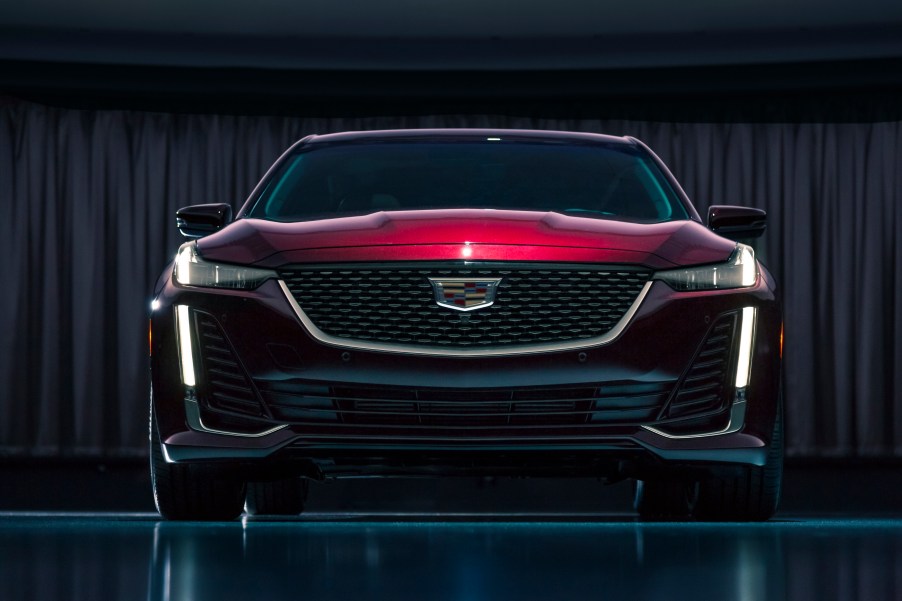
Cadillac’s Future Looks Increasingly Dismal
Cadillac is trying like heck to figure out how to ignite consumers the way it did half a century ago, and having a heck of a time doing it. Some of those miscues, failures, and attempts are outlined today in a New York Times article about the storied brand.
It’s amazing that Cadillac’s parent General Motors never saw how it diluted and soiled its most prestigious brand by continually squeezing quality, innovation, and desirability until the brand was so hollowed and irrelevant Cadillac has found it almost impossible to rebound.
Some of Cadillac’s statistics are eye-popping. While 20% of Cadillac competitor Audi’s buyers are over 65 years of age, that number jumps to almost 40% for Cadillac. While Cadillac has spent precious engineering time and money developing their new 550hp “Blackwing” V8, all other luxury brands are ramping up electric versions of their cars to capture the wave of consumers wanting to switch over to electrification.
Cadillac’s first electric SUV is still three years off. In that time the market will become over-crowded with every manufacturer offering EVs. It will be behind competitors Jaguar and Audi by three years; and Mercedes, BMW, and Porsche by two years.
Currently, Cadillac is sixth in luxury car sales in the US. Globally it’s way down the list lead by German-engineered Mercedes, BMW, and Audi–all of whom have lead in so many metrics Cadillac ignored for decades.
Cadillac has become the “discount luxury brand” to many, based on fleet sales, daily rentals, and subsidized lease rates–all attempts by GM to “move the metal” in spite of it killing the brand’s image. And killing secondary market value.
While Cadillac has tried to compete with some well designed and engineered cars those attempts have left them with a dearth of vehicles consumers wanted: SUVs. As they slowly roll out various lines of SUVs, consumers now want EVs. It’s a moving target that Cadillac has seemed well equipped to hit, but has been unable to get to fast enough.

It took years for Cadillac to replace the outdated SRX, their top-selling crossover. Replaced with the XT5 in 2017, they then lagged behind the demand for smaller crossovers until the XT4 debuted this last March.
In a move meant to stimulate the brain-trust Cadillac moved its headquarters away from forever home Detroit to New York. This was back in 2015. Now, in their latest turnaround attempt, Cadillac has deemed it necessary to return to Detroit, saying “it’s all about the product.” Isn’t it always about the product?
In that move, GM also named Steve Carlisle its new president, replacing former Audi and Lexus head Johan de Nysschen who arrived as Cadillac’s savior in 2014.
De Nysschen mandated Cadillac’s upscale New York move, then mandated dealerships make major investments in facility renovations. Several different marketing programs never moved the needle. Ad campaigns asking viewers to “Dare Greatly” left many as cold as the images that were depicted in the promotion.

Sales and profits plunged. In 2015 there was an 11% drop in Cadillac sales, with another eight-percent slide in 2017. Sales stabilized for 2018. GM overlords have little patience for continual downward sales and unprofitable results. So it was with little fanfare that de Nysschen was shuffled off and GM lifer Carlisle became the next Caddy head.
Back to Detroit Cadillac went, abandoning their Manhattan digs and marketing mumbo jumbo.
It takes so long and so much to build a brand like Cadillac. It took maybe 10 years to strap it with the reputation it has taken another 30 years to bury, with little hope of fulfilling that wish. Billions of dollars, many great minds, excellent product, and marketing moves and mania have done nothing to improve Cadillac’s bottom line. We wonder if those extra bits of profit eeked out of gypo Caddys in the 1970s and 1980s are worth it to GM now?
GM president Mark Reuss says this is Cadillac’s “one last chance” to right the ship by becoming GM’s electric luxury brand. Within six to 10 years.



